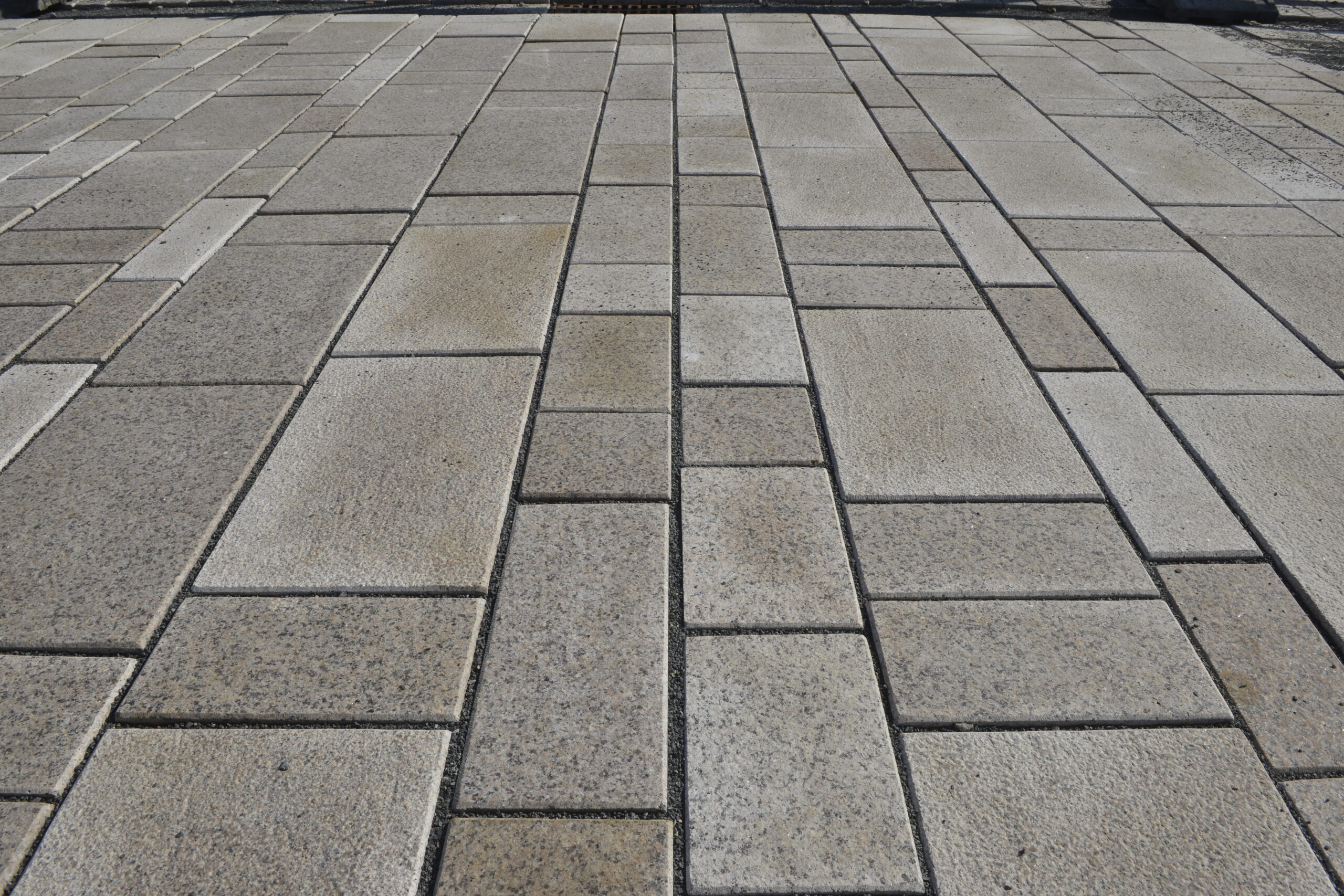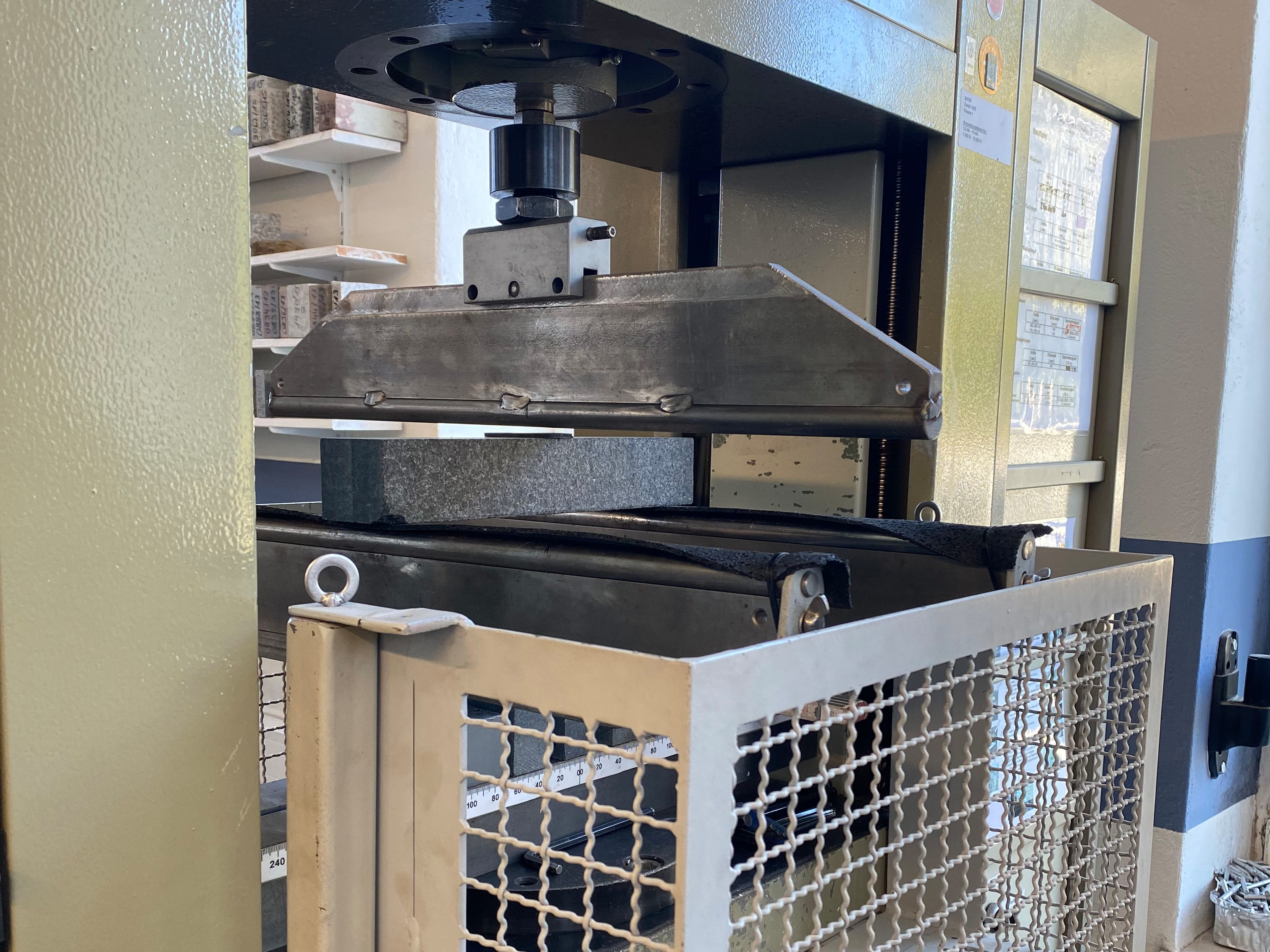
Determination of flexural strength under centerline load according to DIN EN 12372:2022-05
reading time - 4 minINFO series on natural stone testing

Determination of flexural strength under centerline load
With the objective of ensuring a constant quality of the natural stones of BESCO Berliner Steincontor GmbH, tests are regularly carried out to demonstrate that our belgrano® meets desired technical criteria. The determination of the flexural strength under centerline load is one of these tests and will be discussed in more detail below.
The simplest static system “beam on two supports” is used to determine the flexural strength under centerline load. A defined specimen is placed on two flexural supports and loaded centrally and continuously until fracture.
Anisotropy layers of the stone to be tested
10 specimens are to be tested. It is important for the testing laboratory to specify the anisotropy layer (stratification) of the stone to be examined. The client is obliged to clearly mark this, as it is often hardly visible to the human eye. If the direction of use or position of the stratification is not specified, the stone must be tested in all 3 specified directions according to DIN EN 12372. The stratifications are designated as “perpendicular to the anisotropy layers” (Fig. 1), “parallel to the anisotropy layers” (Fig. 2) and “perpendicular to the edges of the anisotropy layers” (Fig. 3).



Dimensions, temperature and surface of the test specimens
The dimensions of the specimens are variable. Preferably, the dimensions 300 x 50 x 50 mm are used. However, other formats can also be chosen, provided that the minimum requirements of the standard for length, width and height of the specimens are met. It should be noted that the width must not be smaller than the thickness.
Before testing, the specimens should be dried at 70 °C until the mass is constant. Marble should be dried at 40 °C only. This is achieved when the mass difference of two weighings within approx. 24 h is not greater than 0.1 %.
As a standard, the surface of the test specimens should be sawn, ground or polished. Other surface finishes (e.g. flamed, bush-hammered, blasted) must be specified in the test report.
The test and the test results
The prepared specimens shall be loaded uniformly to failure at a test rate of (0.25 + 0.05) MPa. From the determined test values of breaking load, thickness and width at the breaking surface as well as the support distance, the flexural strength of each individual test specimen is calculated to 0.1 MPa.
The test results thereby determined shall be summarized in a test report. This must also include statements on the standard deviation and the lower expected value of the flexural strength. The calculation of these parameters is specified in Annex A of the above-mentioned test standard.
In the case of heavily weathered natural stone or natural stone with irregular cleavage planes, the fracture may occur off-center. For these cases, DIN EN 12372 gives a calculation example in the informative Annex B to determine the exact bending strength.
Further information
If you have any further questions or would like individual support for your project, please feel free to contact us at any time via our contact form or send us a message to mail@besco-gmbh.de. We will get back to you shortly.
Further exciting content awaits you in upcoming articles in the INFO series on natural stone testing.
We would be happy to inform you about the latest
topics and innovations relating to natural stone.
ARTICLES ABOUT THIS TOPIC
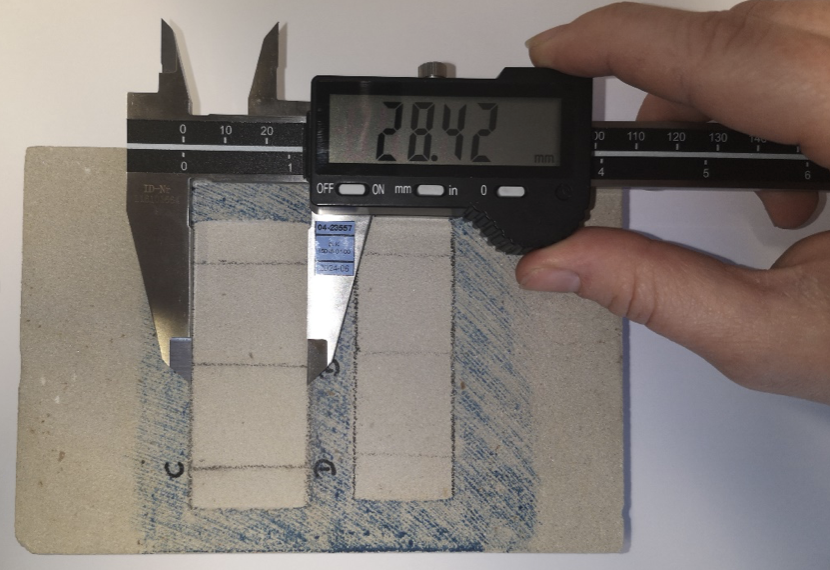
reading time – 5 min

reading time – 5 min

reading time – 4 min

reading time – 3 min

reading time – 5 min
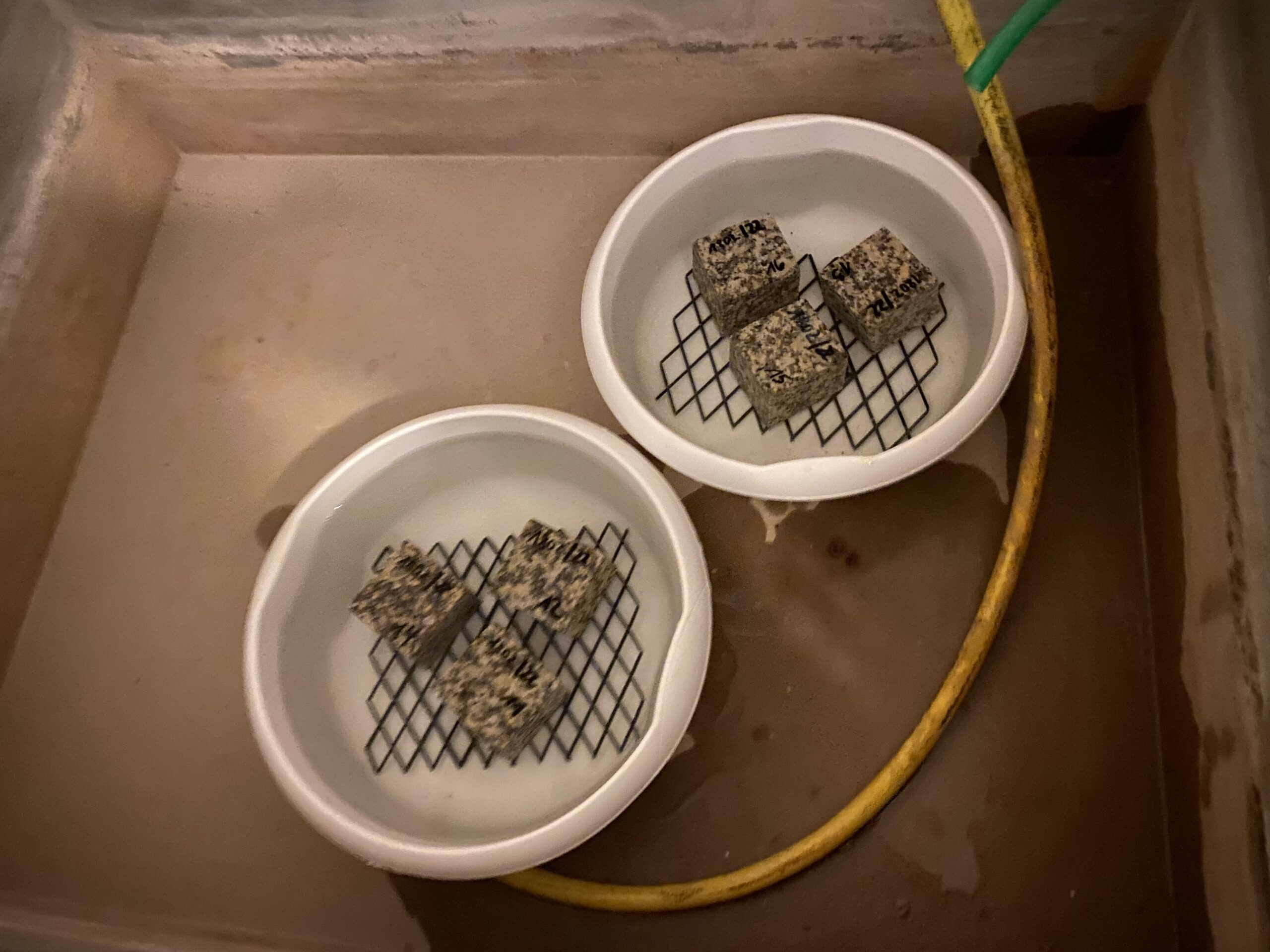
reading time – 5 min
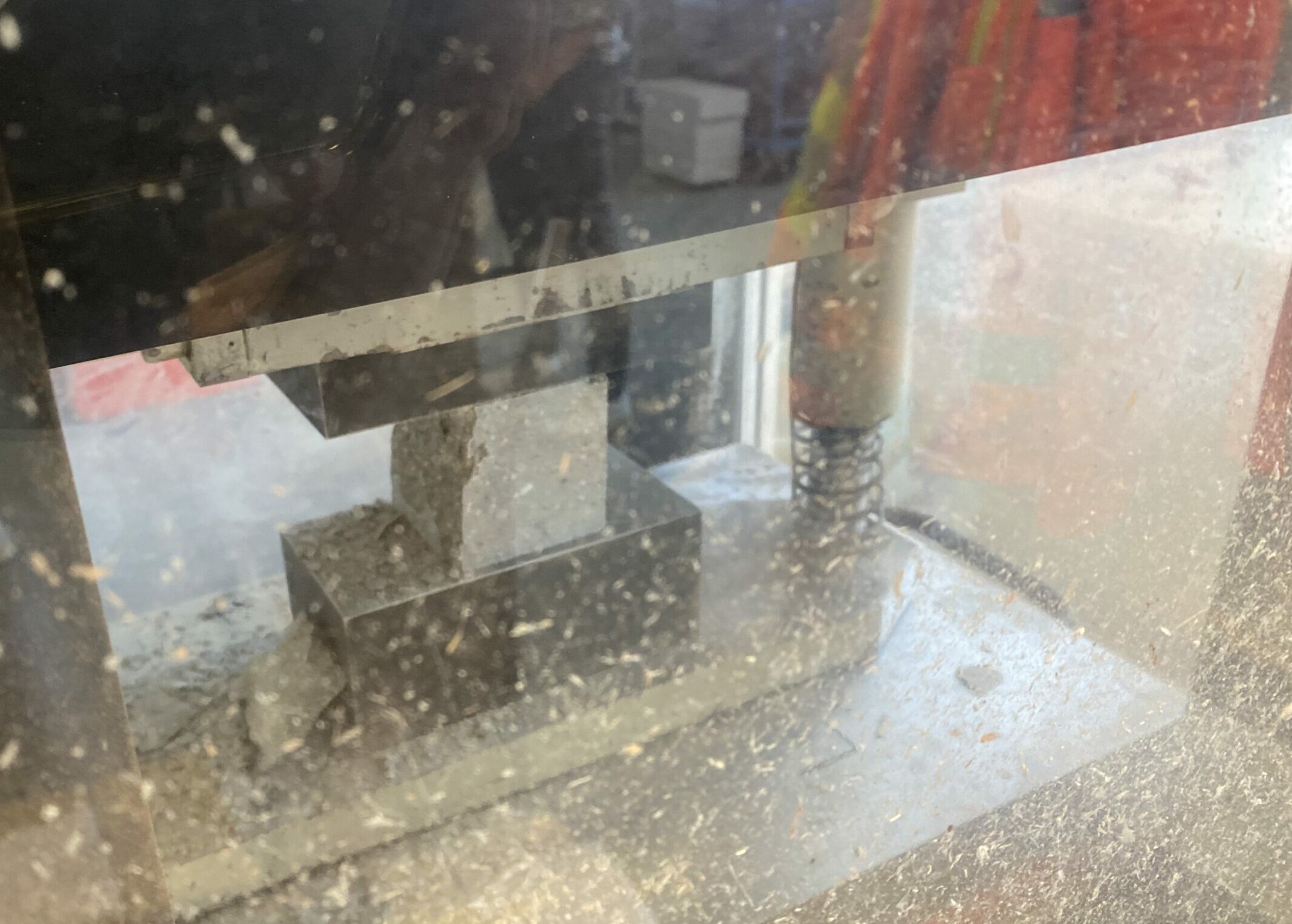
reading time – 4 min
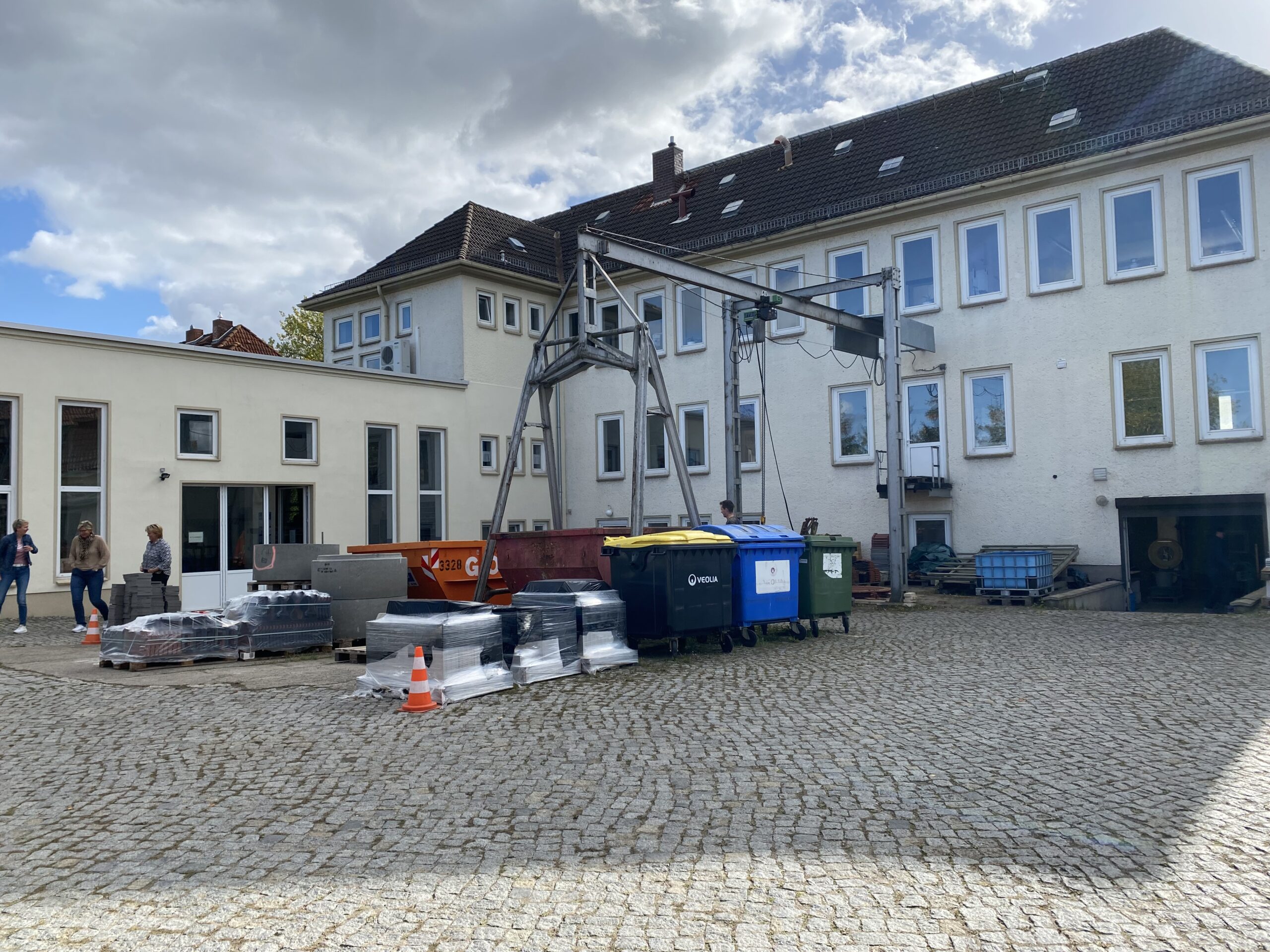
reading time – 2 min
